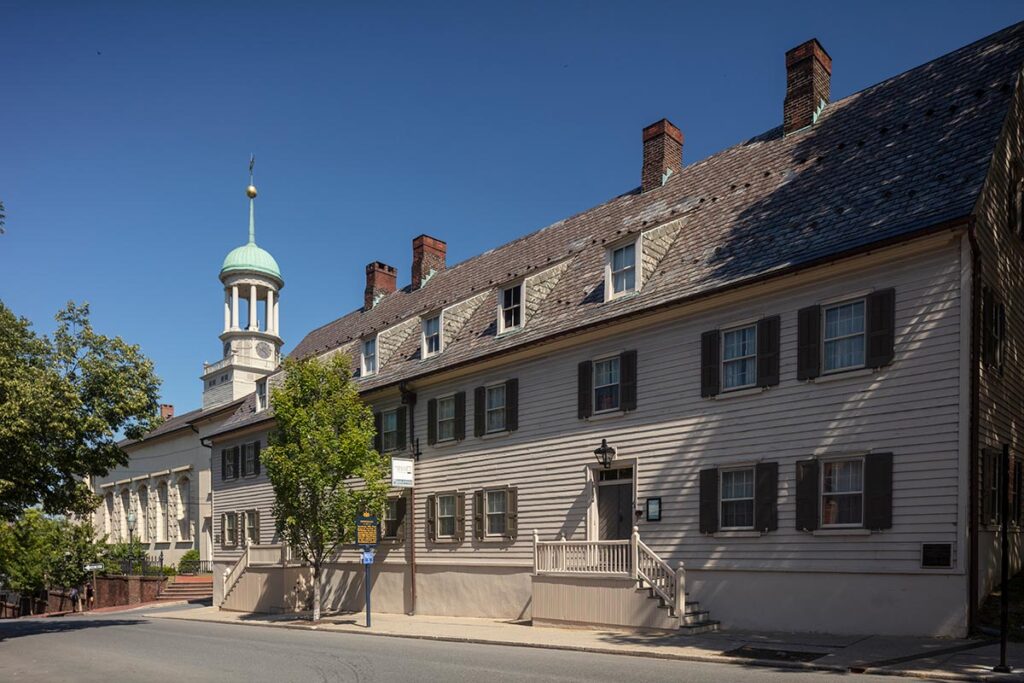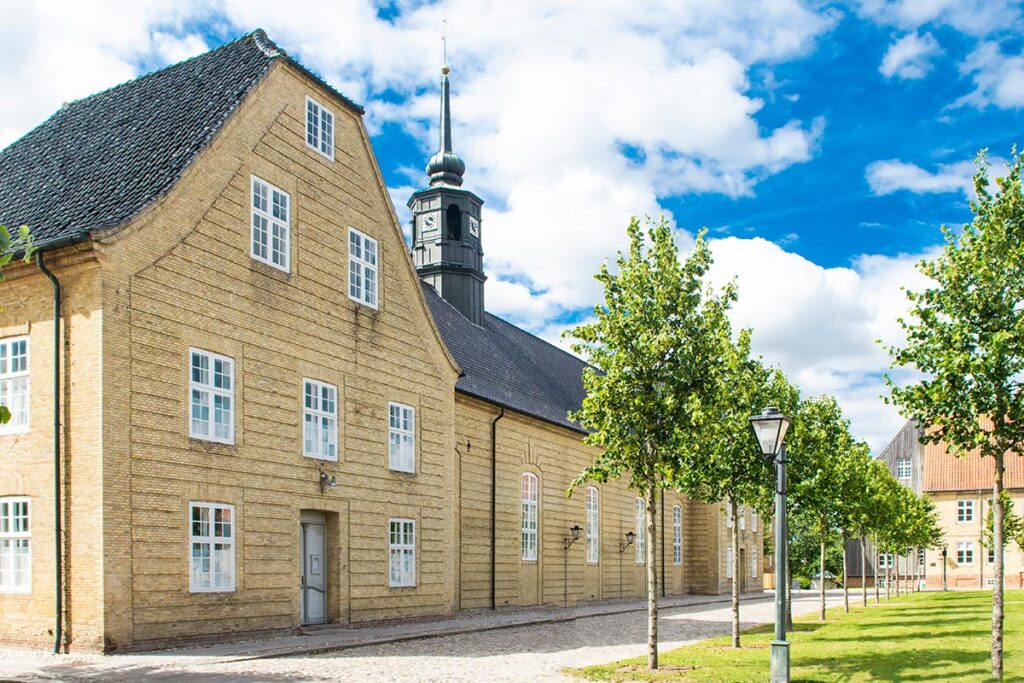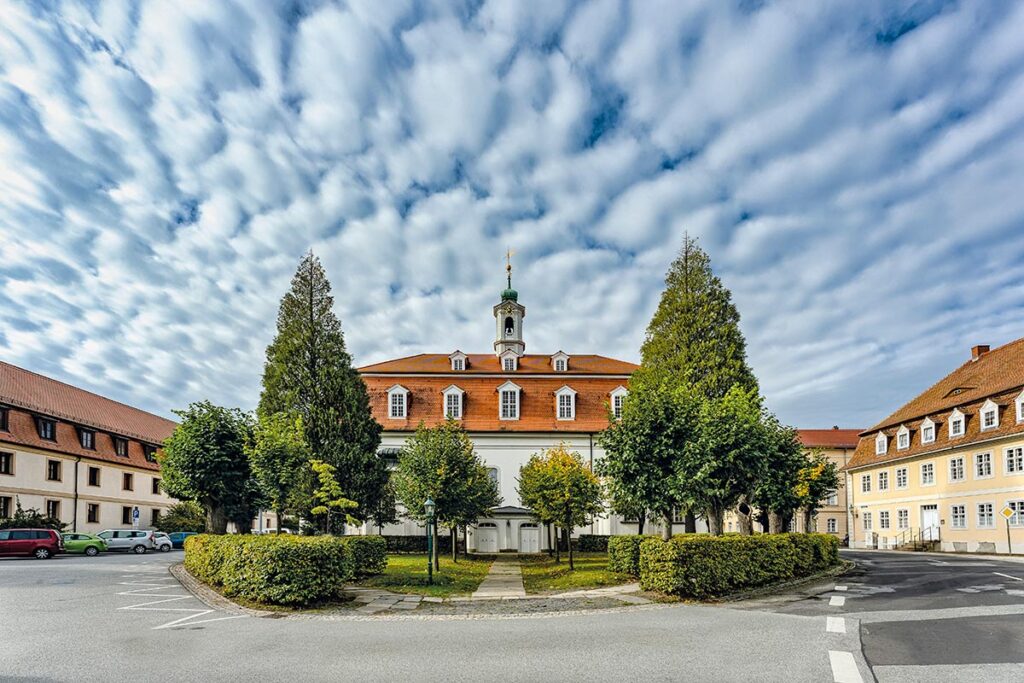
Bethlehem site joins an esteemed group of historic locations in Denmark, Northern Ireland, and Germany
NEW DELHI, INDIA and BETHLEHEM, PA, USA; July 26, 2024 – Today, J. William Reynolds, Mayor of the City of Bethlehem and Chair of the Bethlehem World Heritage Council and Commission along with Bethlehem Area Moravians, Central Moravian Church, Historic Bethlehem Museums & Sites, and Moravian University is pleased to announce that Moravian Church Settlements (MCS) has been inscribed on the prestigious World Heritage List at the World Heritage Committee meeting in New Delhi, India, July 21-31, 2024.
The historic Moravian Church Settlements of Bethlehem, Pennsylvania/USA; Gracehill, Northern Ireland/UK; and Herrnhut, Germany now join Christiansfeld, Denmark (already inscribed in 2015) as a single World Heritage site that represents the outstanding universal value of these historic settlements and the worldwide influence of the Moravian Church.
Moravian Church Settlements — Bethlehem becomes the 26th World Heritage site in the United States.
With its intact core of original buildings, Moravian Church Settlements – Bethlehem preserves some of the most important structures and sites relating to the Moravians in the New World and is significant as an outstanding example of Moravian architecture and town planning. The settlement played a key role in both the international and American Moravian communities.
Located in the heart of downtown Bethlehem, the site spans 10 acres. It includes nine structures, four ruins, and God’s Acre cemetery, all within the already designated Historic Moravian Bethlehem National Historic Landmark District — one of only eight Landmark Districts in Pennsylvania and one of just over 200 in the nation.
It stands as a reflection of and tribute to the resilience of a community built on universal human ideals that are essential and relevant to this day. Moravian Church Settlements – Bethlehem preserves and advances the ageless values of education, equality, industry, integrity, and spirituality that have been part of the community since 1741.
The inscription is expected to significantly boost cultural tourism to Bethlehem, attracting visitors from around the world eager to experience firsthand the rich history, stunning architecture, and vibrant Moravian traditions still alive in the community. Local museums, historic sites, and festivals are also likely to draw larger crowds — further strengthening Bethlehem’s position as a major cultural destination.
“Our community has long cherished and preserved Moravian Church Settlements — Bethlehem, and we are honored to receive this global recognition,” declared Mayor Reynolds. “The designation as a UNESCO World Heritage Site is a profound testament to the unmatched historical and cultural significance of Bethlehem and the enduring legacy of the Moravian Church.”
This is the first Transnational, Serial Nomination put forth by the United States and is the result of a decades-long effort among Bethlehem Area Moravians, Central Moravian Church, City of Bethlehem, Historic Bethlehem Museums & Sites, Moravian University, and with the support of Northampton County and others.
“We extend our deepest gratitude to all those whose passion and unwavering support have been instrumental in our efforts and have played a crucial role in reaching this momentous milestone,” added Mayor Reynolds. “We also recognize the Office of International Affairs of the National Park Service, U.S. Department of the Interior, and the World Heritage Committee for affirming the cultural significance of these sites.”
For more information, visit https://moravianchurchsettlements.org.




###
MEDIA CONTACTS
- Bethlehem: Craig Larimer, larimerc@moravian.edu
- Christiansfeld: Steen Rosenvinge Lundbye, srl@museumkolding.dk
- Gracehill: David Johnston, johnstonni@aol.com
- Herrnhut: Friederike Hansell, friederikehansell@gmail.com
Moravian Church Settlements is a transnational extension of Christiansfeld, a Moravian Church Settlement in Denmark founded in 1773 and inscribed on the World Heritage List in 2015. The Moravian
Church is a Protestant denomination in the free church tradition centered in Herrnhut, Saxony, Germany. The extension includes three additional component parts:
Bethlehem (USA) was established in the Commonwealth of Pennsylvania in 1741. This highlights the early transatlantic dimension of the Moravian Church phenomenon during a prolific settlement-building decade and added the cultural dimension of the Moravians’ outreach to Native Americans.
Gracehill (UK) was founded in Northern Ireland in 1759. It represents the significance of the Moravian Church in the UK and exemplifies a unique series of ‘ideal’ urban plans that demonstrate a notable gender axis. This is showcased by the division of the town plan into a sisters’ side and a brothers’ side, which directly reflects the fundamental functional structure of Moravian society.
Herrnhut (Germany) is considered the ‘mother’ or ‘founding town’ of the Renewed Moravian Church. It was established in 1722 in Saxony and evolved in line with the development of Moravian theology and societal ideals. This town defined the principles of all Moravian Church settlements.